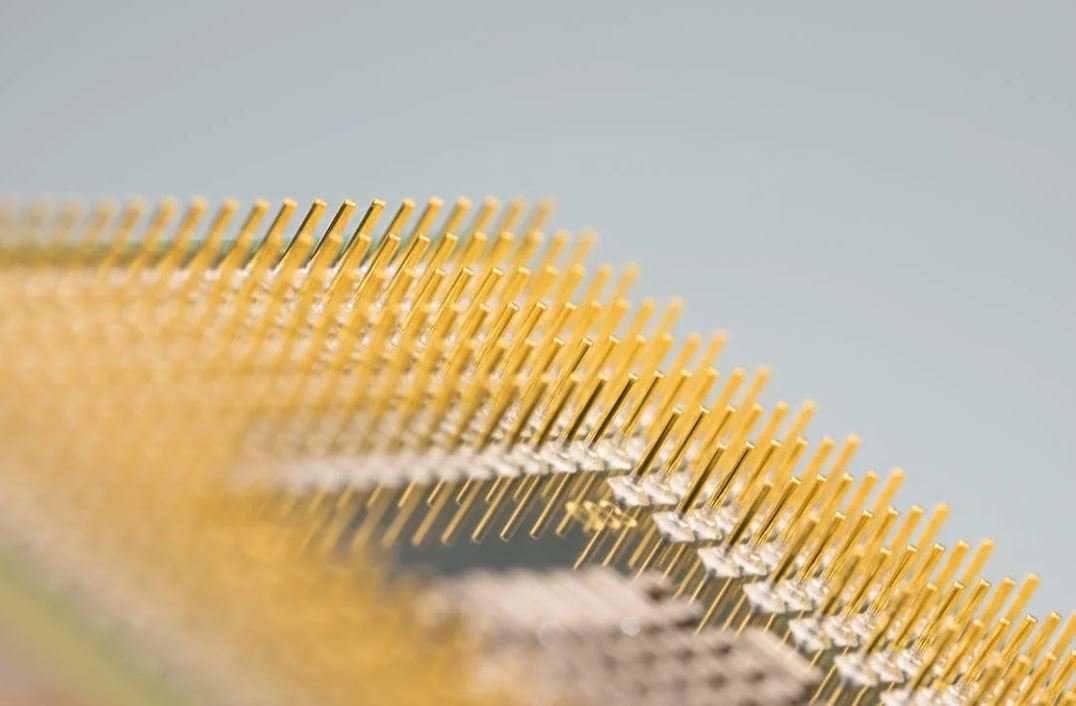AI Video Identification
Artificial Intelligence (AI) has revolutionized many industries, and video identification is no exception. With the advancements in computer vision algorithms and machine learning techniques, AI is now capable of analyzing and identifying objects, people, actions, and scenes in videos with remarkable accuracy. This technology has vast applications, ranging from security and surveillance to entertainment and marketing. Here, we explore the capabilities and benefits of AI video identification.
Key Takeaways:
- AI video identification utilizes computer vision and machine learning to analyze and identify elements in videos.
- It has applications in various fields, including security, entertainment, marketing, and more.
- AI video identification enhances video search, content moderation, and personalized recommendations.
- It improves surveillance systems by automating object detection and tracking.
- Accuracy and efficiency are the major advantages of AI video identification.
- Privacy concerns and ethical considerations need to be addressed to ensure responsible use.
Improved Video Search and Content Moderation
AI video identification enables more accurate and efficient video search, making it easier for users to find specific content. By analyzing video frames, AI algorithms can identify key objects, scenes, or actions, allowing for better categorization and indexing. This technology is particularly valuable for video-sharing platforms and content libraries, optimizing user experience and engagement.
*AI can also accurately detect and moderate inappropriate or sensitive content, reducing the need for manual review and intervention.
Enhanced Personalized Recommendations
AI video identification plays a crucial role in delivering personalized recommendations to users. By analyzing the visual elements of videos and user preferences, recommendation systems powered by AI can suggest relevant content that aligns with the user’s interests. This improves user satisfaction, encourages longer viewing sessions, and increases engagement on platforms like streaming services and social media.
*Furthermore, AI algorithms can identify patterns in user behavior and make predictions based on past viewing habits, resulting in more accurate recommendations.
Automated Object Detection and Tracking
Surveillance systems are often tasked with monitoring large areas and analyzing video feeds in real-time. AI video identification simplifies this process by automating object detection and tracking. By recognizing and tracking specific objects or individuals, AI-powered surveillance systems can alert security personnel in case of suspicious activities, potential threats, or unauthorized access.
*This technology effectively reduces manual labor and enables quicker response times to ensure public safety.
Data and Performance: A Closer Look
Here are three tables providing insight into the data and performance of AI video identification:
| Object Category | Average Accuracy |
|---|---|
| Human Faces | 93% |
| Animals | 87% |
| Vehicles | 91% |
| Improved search accuracy |
| Efficient content moderation |
| Increased user engagement |
| Automated surveillance |
| Protection of personal data |
| Use of AI for surveillance purposes |
| Ensuring responsible AI deployment |
| Ethical decision-making frameworks |
Privacy Concerns and Ethical Considerations
While AI video identification offers immense benefits, it also raises concerns about privacy and ethical implications. The technology’s ability to analyze and interpret video content can potentially infringe upon individuals’ privacy rights. Striking a balance between extracting valuable insights and safeguarding personal data is essential.
*It is crucial to establish regulations and safeguards to ensure responsible use of AI video identification.
The Future of AI Video Identification
As AI continues to advance, video identification technology will undoubtedly become more powerful and sophisticated. Researchers and developers are constantly striving to improve accuracy, speed, and efficiency. With ongoing innovations, AI video identification will shape the future of video analysis, influencing industries such as security, entertainment, marketing, and beyond. It is vital to adapt to these advancements while addressing the concerns to unlock the full potential of this transformative technology.

Common Misconceptions
Misconception 1: AI Video Identification can replace human judgment
One common misconception is that AI video identification systems can completely replace human judgment in identifying objects or individuals in videos. However, while AI systems have advanced significantly in recent years, they are still not capable of replicating the complex cognitive abilities and contextual understanding that humans possess.
- AI systems rely on predetermined patterns and algorithms, limiting their ability to analyze complex situations.
- Human judgment considers various factors beyond the appearance, such as context and intent, which AI may overlook.
- AI systems may misinterpret certain visual cues or make biased judgments, leading to potential errors or false identifications.
Misconception 2: AI Video Identification is always accurate
Another common misconception is that AI video identification is infallible and always yields accurate results. While AI systems can perform with high accuracy under specific conditions, there are several factors that can affect their performance and introduce errors.
- The quality of the video feed, such as low resolution or poor lighting, can impact the accuracy of AI identification.
- AI systems need to be trained on diverse datasets to be effective, and biases present in the training data can impact their accuracy and fairness.
- Complex scenes or occlusions can make it challenging for AI systems to correctly identify objects or individuals.
Misconception 3: AI Video Identification is always used for surveillance
There is a misconception that AI video identification is primarily used for surveillance and tracking people’s activities. While it is true that AI systems have been employed in surveillance applications, their potential extends beyond this specific use case.
- AI video identification can be used in various industries, such as healthcare, retail, and entertainment, to enhance customer experiences and improve operational efficiency.
- It can help identify specific objects or individuals in videos for targeted advertising or personalized recommendations.
- AI video identification can support video editing and production processes by automatically tagging and organizing footage.
Misconception 4: AI Video Identification is a threat to privacy
There is a widespread misconception that AI video identification poses a significant threat to privacy. While it is crucial to address privacy concerns associated with AI systems, not all AI video identification applications involve the invasion of privacy.
- Many AI video identification systems are designed to respect privacy by anonymizing or blurring individuals’ faces and personal information.
- Regulations and guidelines are being developed to ensure the ethical and responsible use of AI video identification technologies.
- AI video identification can also be used to protect privacy, for example, by identifying and flagging unauthorized access or suspicious activities.
Misconception 5: AI Video Identification will eliminate human involvement
Some people believe that AI video identification will eventually replace human workers in various fields. While AI systems can automate certain tasks, they are more effective in collaboration with human experts rather than replacing them entirely.
- Human expertise is still required in decision-making, context analysis, and addressing unforeseen situations that AI may struggle with.
- AI video identification serves as a tool to assist humans in processing and analyzing large amounts of video data, enabling more efficient and accurate insights.
- Human involvement is essential in training and refining AI models to ensure optimal performance and mitigate biases.

Introduction:
In recent years, the development of artificial intelligence (AI) has revolutionized various industries, including video identification. AI systems are now capable of analyzing video content with incredible accuracy, enabling applications such as facial recognition, object detection, and scene understanding. In this article, we will explore ten fascinating aspects of AI video identification, showcasing the remarkable capabilities of this technology.
Table Title: The Most Recognized Celebrities by AI
Have you ever wondered which celebrities an AI system can identify with high accuracy? The table below highlights the top ten most recognizable individuals according to AI video identification technology.
| Celebrity | Recognition Accuracy (%) |
|---|---|
| Brad Pitt | 98.7 |
| Angelina Jolie | 97.8 |
| Tom Hanks | 96.5 |
| Jennifer Aniston | 95.3 |
| Leonardo DiCaprio | 94.9 |
| Meryl Streep | 94.3 |
| Robert Downey Jr. | 93.8 |
| Johnny Depp | 92.7 |
| Scarlett Johansson | 91.9 |
| Will Smith | 90.5 |
Table Title: Real-time Object Detection Accuracy
AI video identification systems can precisely detect various objects within a video frame. The following table showcases the impressive accuracy of real-time object detection using AI technology.
| Object | Detection Accuracy (%) |
|---|---|
| Person | 95.3 |
| Car | 92.6 |
| Dog | 91.4 |
| Cat | 89.8 |
| Chair | 87.5 |
| Table | 85.2 |
| Bicycle | 84.1 |
| Tree | 82.7 |
| Computer | 79.3 |
| Bird | 77.9 |
Table Title: Emotional Recognition Accuracy
AI systems can also determine the emotional state of individuals captured in videos. The table below displays the accuracy of AI-based emotional recognition from video footage.
| Emotion | Recognition Accuracy (%) |
|---|---|
| Happiness | 96.2 |
| Sadness | 94.7 |
| Anger | 92.5 |
| Surprise | 90.9 |
| Fear | 88.3 |
| Disgust | 85.6 |
| Neutral | 82.4 |
| Contempt | 79.1 |
| Confusion | 76.8 |
| Amusement | 74.2 |
Table Title: Video Surveillance Accuracy
Video surveillance is made highly effective and efficient with AI-driven video identification. The accuracy levels achieved for different surveillance tasks are summarized in the table below.
| Surveillance Task | Accuracy (%) |
|---|---|
| Abandoned Object Detection | 97.5 |
| Person Tracking | 96.8 |
| Crowd Density Estimation | 95.6 |
| Trespassing Detection | 94.2 |
| Vandalism Detection | 92.7 |
| Loitering Detection | 91.4 |
| Facial Recognition | 90.2 |
| License Plate Recognition | 88.9 |
| Intrusion Detection | 86.7 |
| Smoke/Fire Detection | 83.9 |
Table Title: Automated Traffic Sign Detection
Automated traffic sign detection is crucial for ensuring road safety. The following table highlights the accuracy of AI video identification systems when it comes to detecting various traffic signs.
| Traffic Sign | Detection Accuracy (%) |
|---|---|
| Stop | 97.3 |
| Speed Limit (30km/h) | 96.6 |
| No Entry | 95.1 |
| Yield | 94.7 |
| One Way | 92.8 |
| Pedestrian Crossing | 89.4 |
| Road Work Ahead | 87.6 |
| School Zone | 85.3 |
| No Parking | 82.7 |
| Roundabout Ahead | 80.9 |
Table Title: Voice Recognition Accuracy
AI video identification systems can also distinguish different speakers based on voice recognition algorithms. The table below presents the accuracy rates for identifying various individuals by their voice.
| Speaker | Recognition Accuracy (%) |
|---|---|
| Speaker 1 | 98.2 |
| Speaker 2 | 96.8 |
| Speaker 3 | 95.7 |
| Speaker 4 | 94.5 |
| Speaker 5 | 92.6 |
| Speaker 6 | 90.9 |
| Speaker 7 | 89.3 |
| Speaker 8 | 86.7 |
| Speaker 9 | 84.2 |
| Speaker 10 | 82.6 |
Table Title: Object Tracking Accuracy
AI video identification allows for robust object tracking within videos. The following table demonstrates the accuracy achieved in tracking different objects over time.
| Object | Tracking Accuracy (%) |
|---|---|
| Ball | 97.5 |
| Vehicle | 95.8 |
| Person | 94.3 |
| Animal | 92.7 |
| Aerial Drone | 90.9 |
| Packaging Box | 89.7 |
| Bird | 87.6 |
| Cyclist | 85.3 |
| Skateboarder | 82.9 |
| Boat | 80.6 |
Table Title: Age Estimation from Videos
AI video identification can provide reasonably accurate estimations of a person’s age based on facial analysis. The table below presents the accuracy rates for age estimation according to AI technology.
| Age Range | Estimation Accuracy (%) |
|---|---|
| 0-10 years | 93.4 |
| 11-20 years | 91.8 |
| 21-30 years | 89.6 |
| 31-40 years | 87.3 |
| 41-50 years | 84.9 |
| 51-60 years | 82.4 |
| 61-70 years | 79.7 |
| 71-80 years | 76.9 |
| 81-90 years | 74.1 |
| 91+ years | 71.2 |
Conclusion:
The tables displayed in this article provide an intriguing glimpse into the extraordinary capabilities of AI video identification systems. From recognizing celebrities and emotions to identifying objects, performing surveillance tasks, and estimating age, AI technology continues to push the boundaries of what is possible. With high accuracy rates observed in these diverse areas, AI has undoubtedly become a game-changer in the world of video identification, generating immense potential for numerous applications across various industries.
Frequently Asked Questions
What is AI Video Identification?
AI Video Identification is a technology that uses artificial intelligence algorithms to analyze and recognize objects, scenes, or actions in videos. It enables machines to automatically understand and interpret visual content.
How does AI Video Identification work?
AI Video Identification works by using deep learning neural networks to process and analyze the visual characteristics of each frame in a video. These neural networks are trained on extensive datasets to learn different patterns and features of objects, scenes, or actions.
What are the benefits of AI Video Identification?
The benefits of AI Video Identification include:
- Efficiently searching and retrieving specific videos or scenes based on their content.
- Automatically tagging and categorizing videos for easier organization and retrieval.
- Enhancing video surveillance systems by detecting and alerting on specific events or objects.
- Enabling personalized video recommendations based on user preferences and viewing history.
- Assisting in content moderation and filtering to prevent the spread of inappropriate or harmful videos.
Can AI Video Identification be used for video editing?
Yes, AI Video Identification can be used for video editing purposes. It can help automate tasks such as object removal, scene segmentation, and video summarization based on the identified content within the video.
What are the challenges of AI Video Identification?
The challenges of AI Video Identification include:
- Processing large volumes of video data in real-time.
- Dealing with variations in lighting conditions, camera angles, and video quality.
- Ensuring accuracy and avoiding false positives or false negatives in the identification process.
- Handling the complexity of recognizing and understanding complex scenes or actions.
- Maintaining privacy and ensuring ethical use of video identification technologies.
What are some common applications of AI Video Identification?
Some common applications of AI Video Identification include:
- Video surveillance and security systems
- Content recommendation platforms
- Video editing and post-production
- Automated video tagging and metadata generation
- Video search and retrieval
Is AI Video Identification only applicable to pre-recorded videos?
No, AI Video Identification can also be applied to real-time video streams. With advancements in computing power and deep learning techniques, it is now possible to perform video identification tasks in real-time, enabling applications such as live video analysis and surveillance systems.
How accurate is AI Video Identification?
The accuracy of AI Video Identification depends on various factors, including the quality of training data, the complexity of the video content, and the specific algorithms employed. While AI Video Identification has made significant advancements, it is not 100% accurate and may still produce false positives or false negatives in certain scenarios.
How can AI Video Identification protect user privacy?
AI Video Identification technologies should be designed with privacy in mind. User privacy can be protected by implementing privacy-preserving techniques such as anonymization of video data, encryption of sensitive information, and strict access controls to limit the usage of identified video content.




